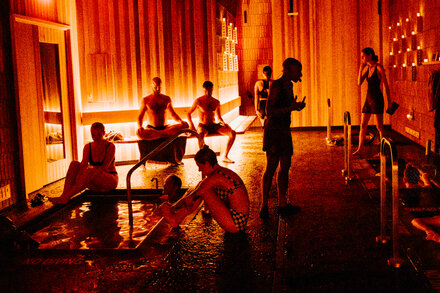
As societies grapple with a burgeoning crisis of loneliness, researchers and public health experts are increasingly looking beyond conventional solutions, turning their gaze towards historical practices for inspiration. One particular area of interest is the communal rituals of ancient civilizations, with some questioning whether these age-old traditions could offer a modern remedy to our profound sense of isolation.
The concept hinges on the idea that many ancient societies integrated shared experiences into the fabric of daily life, fostering community and connection organically. Unlike the predominantly solitary and digitally-mediated interactions prevalent today, historical traditions often mandated physical presence and shared vulnerability.
The Loneliness Epidemic and the Search for Connection
Recent studies have highlighted the pervasive nature of loneliness, linking it to serious health implications ranging from increased risk of heart disease and stroke to mental health issues like depression and anxiety. Governments and health organizations worldwide have recognized it as a significant public health challenge, prompting a search for effective interventions.
“Loneliness isn’t just a feeling; it’s a physiological stressor that impacts our well-being at a fundamental level,” explains Dr. Evelyn Reed, a sociologist specializing in social connection. “Our modern lifestyles, while offering unprecedented convenience, have often inadvertently stripped away the ‘third places’ – those informal public spaces beyond home and work – where spontaneous social bonds once formed.”
Communal Bathhouses: A Historical Blueprint for Social Cohesion
Among the ancient rituals drawing attention are communal bathing traditions. From the grand Roman baths (thermae) that served as centers for relaxation, business, and social interaction, to the hammams of the Ottoman Empire and the onsen of Japan, shared bathing spaces were far more than just sites for hygiene. They were integral civic institutions that facilitated social bonding across different strata of society.
In these environments, individuals would engage in conversation, share meals, conduct business, and simply exist together in a relaxed, non-hierarchical setting. The absence of digital distractions and the shared vulnerability of the physical state often created an atmosphere conducive to genuine connection. People would spend hours in these communal spaces, forging relationships and reinforcing community ties.
“The Roman baths, for instance, were a microcosm of society,” notes Professor Alistair Finch, a historian of ancient cultures. “They offered a neutral ground where senators might rub shoulders with merchants, and discussions could range from politics to poetry. It was an essential part of the social machinery, deliberately designed to weave people into the fabric of their community.”
Modern Adaptation: Potential and Pitfalls
The question then arises: can such ancient models be effectively transplanted into the 21st century? Proponents argue that the underlying principles – creating intentional spaces for shared, low-stakes interaction – remain highly relevant. Modern iterations might include community wellness centers designed with expansive common areas, accessible public pools with a focus on social activities, or even the revitalization of sauna culture, emphasizing its communal rather than just individual health benefits.
However, significant hurdles exist. Modern sensibilities around privacy, body image, and hygiene present cultural barriers that were less prominent in ancient times. Economic viability, regulatory challenges, and the inherent individualistic tendencies of many contemporary societies also pose considerable obstacles to widespread adoption. Furthermore, the effectiveness of any such initiative would heavily rely on fostering an inclusive and welcoming atmosphere that encourages diverse participation.
While a direct replication of ancient bathhouses may not be feasible for all, the core lesson drawn from these historical practices offers valuable insight: the deliberate creation of shared, non-transactional spaces is crucial for nurturing community and combating the isolating effects of modern life. The challenge lies in adapting these age-old principles to fit contemporary cultural norms and expectations.
Source: Read the original article here.





